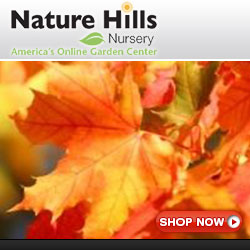
Whenever I hear the term cottage garden, I conjure up images of hidden oases of beautiful flowing flowers nestled behind old thatched roofed houses in the Cotswolds of England. Some may call them English gardens, but there is a slight distinction. So, what is a cottage garden? It was one of the 2021 garden trends and still is a garden trend for 2022. If you are yearning for a simpler time that oozed serenity, then you’ve come to the right place. Read more about this popular trend.
What is a Cottage Garden?
According to the Collins English Dictionary a cottage garden is “an informal style of garden which has beds planted with a great variety of traditional flowers”.
Traditional flowers were only one small component of the typical cottage garden. Vegetables and fruit trees were the keystone of the garden. When cottage gardens originated in rural areas of England, people had to be self-sufficient. They lived long distances from any local markets. Therefore, their gardens consisted of not only flowers, but also fruit trees and vegetables to sustain their families. It is said that the fragrant flowers were grown close to the home to mask the odor emanating from their houses.
If you are a history buff and would like to read a long narrative of how a cottage garden originated and evolved through the years, click The Cottage Garden and Its Origins.
Why a Cottage Garden?
English gardens and cottage gardens are very similar, however English gardens tend to be a bit more tame and manicured than cottage gardens.
A cottage garden consists of not only an array of flowers, plants and shrubs packed together in a harmonious way, but open spaces connected by stone, gravel or paved walkways.
Incorporating a cottage garden into your yard will add a bit of romance from a past era, slower and peaceful respites from modern life, and an explosion of fragrances, colors and textures to tickle your senses.
Cottage gardens are sustainable and help the environment by attracting wildlife including hummingbirds, butterflies, and bumblebees.
Mainstays of a Cottage Garden
Cottage gardens exude comfort and a feeling of welcome. They say “come in, stay awhile”. Cottage gardens have an abundance of climbing vines, grand flowering bushes and a multitude of old fashioned flowers such as delphinium, hollyhocks, catmint, and roses climbing trellises. Herbs and other edibles are also prevalent in the garden.
The cottage garden is planted close to the house, usually framing it, and should complement its exterior, which will guide its layout and materials.
Cottage gardens have been described as organized chaos! When planting your flowers, take into consideration their light and soil requirements, their sizes when mature, not only width but height, and whether or not they are invasive, creepers, or vine-like. When you plant the flowers, plant en masse. This appeals to the senses and creates a more flowing effect.
For more information on how to create a sustainable garden from scratch, read “Low Maintenance Flower Garden/ Sustainable and Beneficial”.
Elements of a Cottage Garden
1. A Low Fence, Stone Wall and Gate
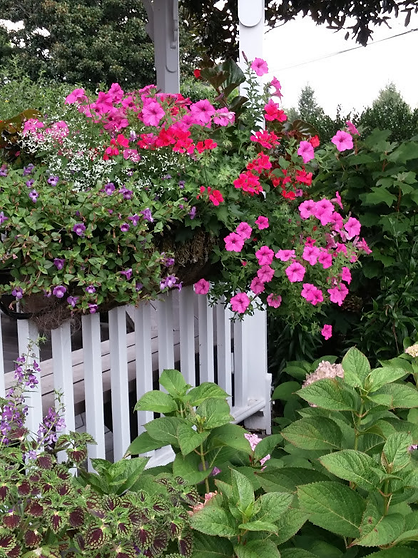
Back in the day a low fence was used to keep livestock corralled. Now, a low fence conveys a sense of welcome and neighborliness to passers-by. It allows people to sneak a peek of your lovely garden. The fence should complement your home with rustic materials such as painted wood or bent willow. It also serves important functions, such as supporting tall rambling stems of flowers, adding separation to your garden, and adding a little neatness to your yard.
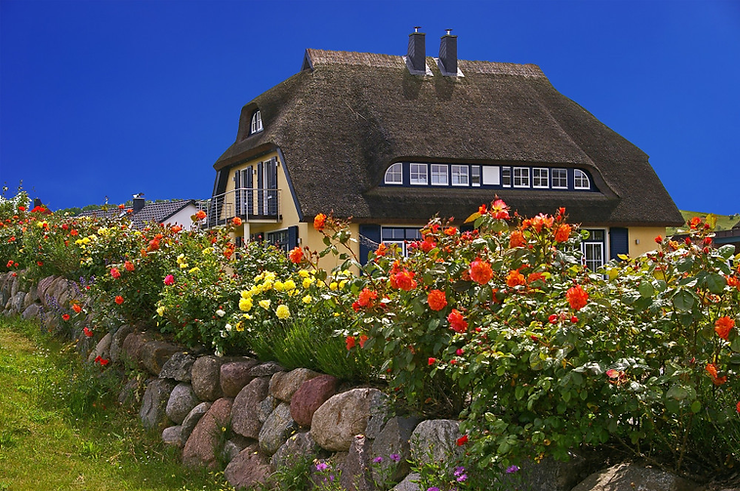
Low stone walls function the same way as picket fences, and should also complement your style of home. The walls add distinction between areas of your garden in addition to highlighting specific flowers.
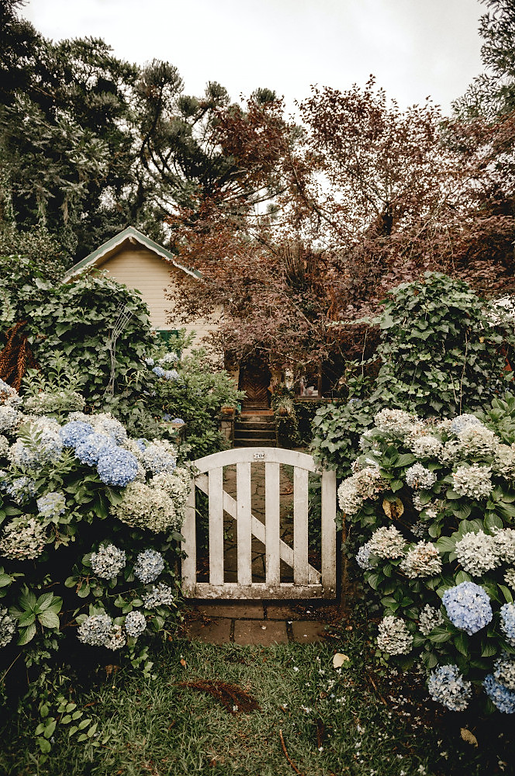
Gates leading to your garden should be low and welcoming. You want to encourage people to come in and take a stroll, not discourage them with a tall stockade-style gate.
2. Hedges
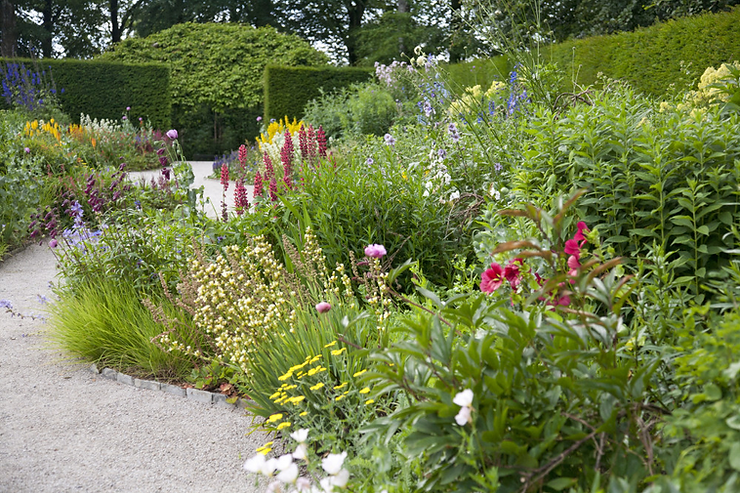
Hedges denote different areas of your garden. For instance, a perennial garden from a vegetable garden, or a secret reading nook from an open play area. Adding broad-leafed evergreens to your garden as a hedge will maintain interest all year long. Some examples are boxwood, low growing holly, junipers, euonymus, rhododendrons and azaleas.
3. Pergolas, Paths, and Trellises
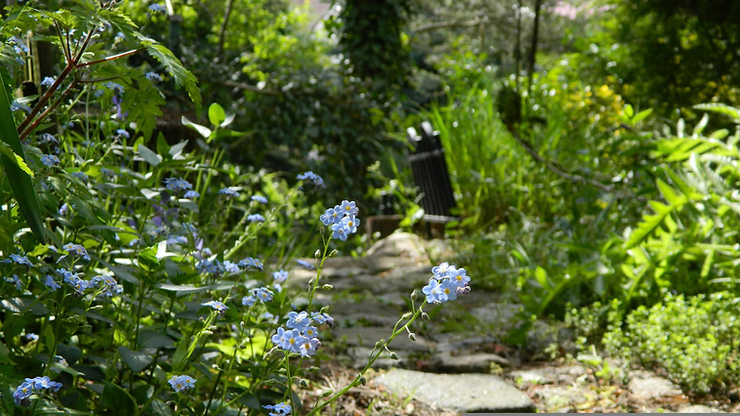
A cottage garden should have winding paths and pergolas covered in flowering vines. The paths will lead to a secret alcove or a special reading spot. Pergolas covered in wisteria add whimsy to an outdoor cafe style table ready for a mid-afternoon snack or evening drink.
For more information on flowering vines, read “Climbing Flowering Vines”.
Pergolas add much needed shade in the heat of the day. When your cottage garden is filled with a plethora of flowers, you will notice the temperature is slightly cooler than on a grassy area. Step under the pergola to enjoy the cooling effect it has.
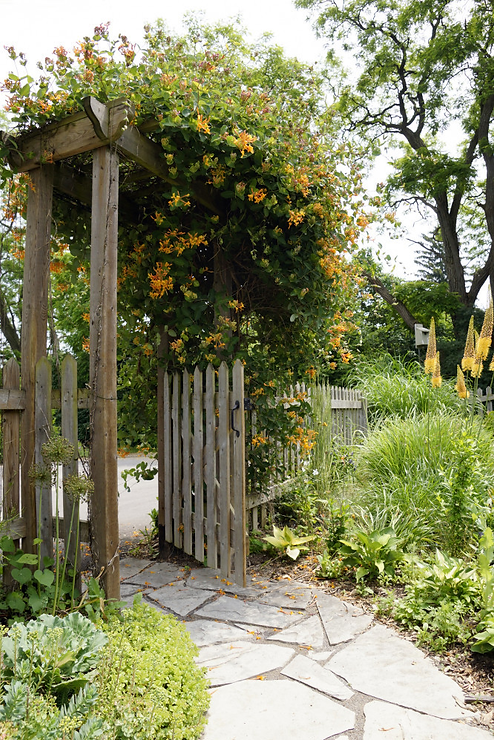
In this picture you see a trellis leading to a garden through a lovely flagstone path. The trellis is covered with trumpet vine.
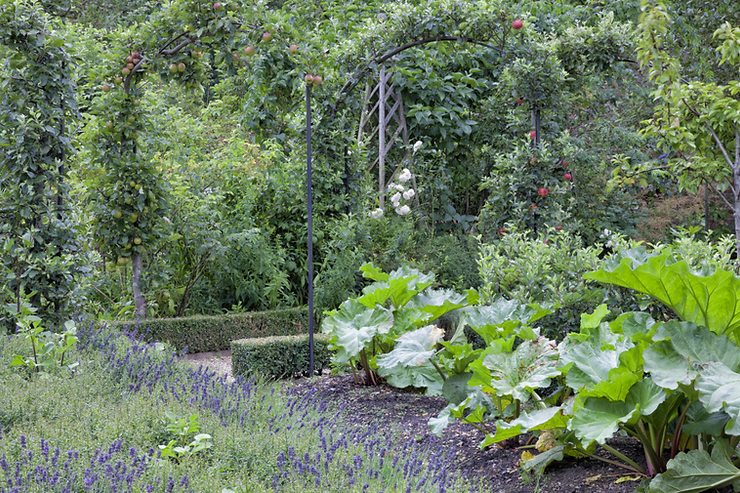
Can you find the pergola? In a true cottage garden, flowers and shrubs flourish everywhere. This garden is covered in rhubarb, lavender and apple trees. Remember, cottage gardens also house fruits, vegetables and herbs.
4. Traditional Plants
When I think of cottage gardens, traditional flowers come to mind. Such flowers include the bonnet-shaped spring flowering plants known as columbines, and hollyhocks, delphinium, phlox, lupins, peonies, roses, campanula, honeysuckle and pinks. Add flowers with similar and complementary colors. This will add a little cohesiveness to your “chaos”.
In addition to these, add berry and vegetable plants, rambling vines such as clematis that grow up onto the house or structures in your garden, and flowering shrubs like hydrangea.
Adding a self-sow flower that drops seeds that will regrow the following season will guarantee flowers for years to come.
Some self-seeding plants include:
- poppies
- cleome
- alyssum
- verbena
- bachelor buttons
- portulaca
- foxglove
- forget me knots
- primrose
- coreopsis
- pansies
- New England Asters
5. Twig Structures
Twig structures support long creeping vines or tall stemmed flowers. They are easily made by collecting the same diameter twig and twining them together at the joints with jute string or rope. Grape vine works well when added to larger twigs as support.
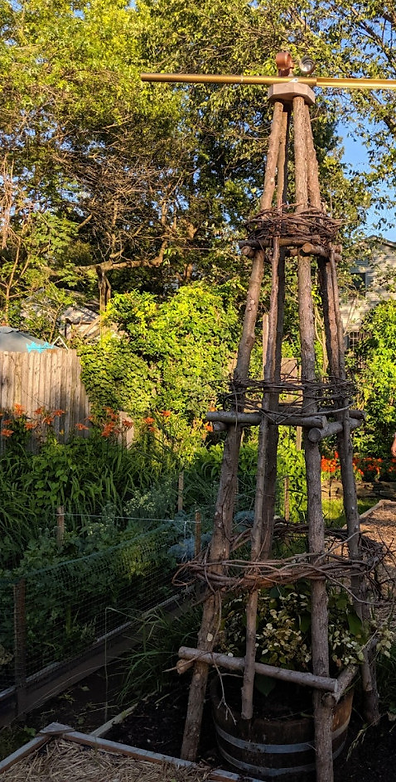
6. Decorative Objects
All cottage gardens reflect the owner’s personality. By nestling ornaments into your garden, you create a space unique to you. For more information on how to decorate a garden, read “Unique Garden Ideas”.
Final Thoughts – What is a Cottage Garden?
Remember when creating a cottage garden, plant flowers en masse, use similar colors that blend well together (it will tame the randomness of the garden), use paths and pergolas to lead to secret areas, and add your own distinct personality with fun, quirky ornaments. Let your creative juices flow and, with a little elbow grease, you will create the garden of your dreams.
I hope you enjoyed this blog and are excited to create your own cottage garden. Please leave a comment below and share this article with others.
Happy Gardening!
Nina


